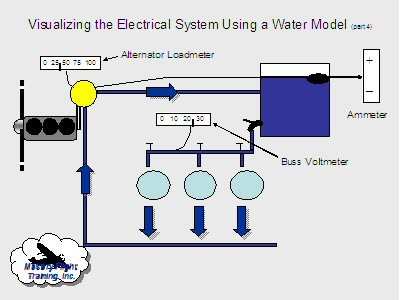Aero-Tips!
A good pilot is always learning -- how many times have you heard
this old standard throughout your flying career? There is no truer
statement in all of flying (well, with the possible exception of
"there are no old, bold pilots.") It's part of what makes aviation
so exciting for all of us... just when you think you've seen it
all, along comes a scenario you've never imagined.

Aero-News has called upon the expertise of Thomas P. Turner,
master CFI and all-around-good-guy, to bring our readers -- and us
-- daily tips to improve our skills as aviators, and as
representatives of the flying community. Some of them, you may have
heard before... but for each of us, there will also be something we
might never have considered before, or something that didn't
"stick" the way it should have the first time we memorized it for
the practical test.
It is our unabashed goal that "Aero-Tips" will help our readers
become better, safer pilots -- as well as introducing our
ground-bound readers to the concepts and principles that keep those
strange aluminum-and-composite contraptions in the air... and allow
them to soar magnificently through it.
Look for our daily Aero-Tips segments, coming each day to you
through the Aero-News Network. Suggestions for future Aero-Tips are
always welcome, as are additions or discussion of each day's tips.
Remember... when it comes to being good pilots, we're all in this
together.
Aero-Tips 02.17.06
For several days we’ve been demystifying an
airplane’s electrical system by comparing it to water
flow. Check out the diagram, sharpen your #2 pencil, and see
what you’ve learned. Answers are at the end of the
article.

- Before engine start you turn on the battery master switch. What
indications should you see on the:
a) ammeter
b) buss voltmeter
c) alternator loadmeter
- While engaging the starter you look at your electrical gauges.
What should you see on the:
d) Ammeter
e) Buss voltmeter
f) Alternator loadmeter
- Immediately after engine start with the alternator turned ON,
what should each gauge read?
- After a minute or two of alternator operation what indications
should you expect on each gauge?
Answers
- The battery is slowly discharging, with little load applied.
Hence the ammeter shows a slight discharge, the buss voltmeter 12
volts or 24 volts, as applicable to the airplane, and the
alternator loadmeter reads zero because the alternator’s not
yet running.
- The starter draws a lot of electricity, but the alternator is
not spinning quickly enough to recharge the battery. Therefore the
ammeter shows a big discharge, the buss voltmeter 12V or 24V as
appropriate, and dropping, and the alternator loadmeter reads
zero.
- Right after turning the alternator ON the ammeter shows a
charge as the battery replenishes; the buss voltmeter shows 14V or
28V as applicable, and the alternator loadmeter reads 25% or
more…working hard to make up power lost during start. (Note:
most alternators need at least about 700 rpm to generate
electricity. Generators may need 2200 rpm or more. Indications from
answer (2) above continue until the recharging system is fully
active).
- Once the battery is recharged, the ammeter should read neutral
(neither charge nor discharge), the buss voltmeter 14V or 28V as
applicable, and the alternator loadmeter usually under 50% of its
rated output.
Please note: This “water visualization” is not
technically correct—but it does a superb job of helping
pilots comprehend what’s going on with the electrical system
to accurately monitor it and troubleshoot problems…as
you’ve probably seen by your ability to answer these
questions. Engineers, mechanics and purists, please forgive this
teaching tool.
Aero-tip of the day: You may not have all three
types of electrical indicators in the airplane you fly, but knowing
how the electrical system works helps you understand the gauges you
have. We’ll end this discussion with a few more questions,
tomorrow in Aero-Tips.
 ANN's Daily Aero-Linx (05.02.24)
ANN's Daily Aero-Linx (05.02.24) ANN's Daily Aero-Term (05.02.24): Touchdown Zone Lighting
ANN's Daily Aero-Term (05.02.24): Touchdown Zone Lighting Aero-News: Quote of the Day (05.02.24)
Aero-News: Quote of the Day (05.02.24) ANN FAQ: Contributing To Aero-TV
ANN FAQ: Contributing To Aero-TV NTSB Final Report: Cirrus Design Corp SR20
NTSB Final Report: Cirrus Design Corp SR20




